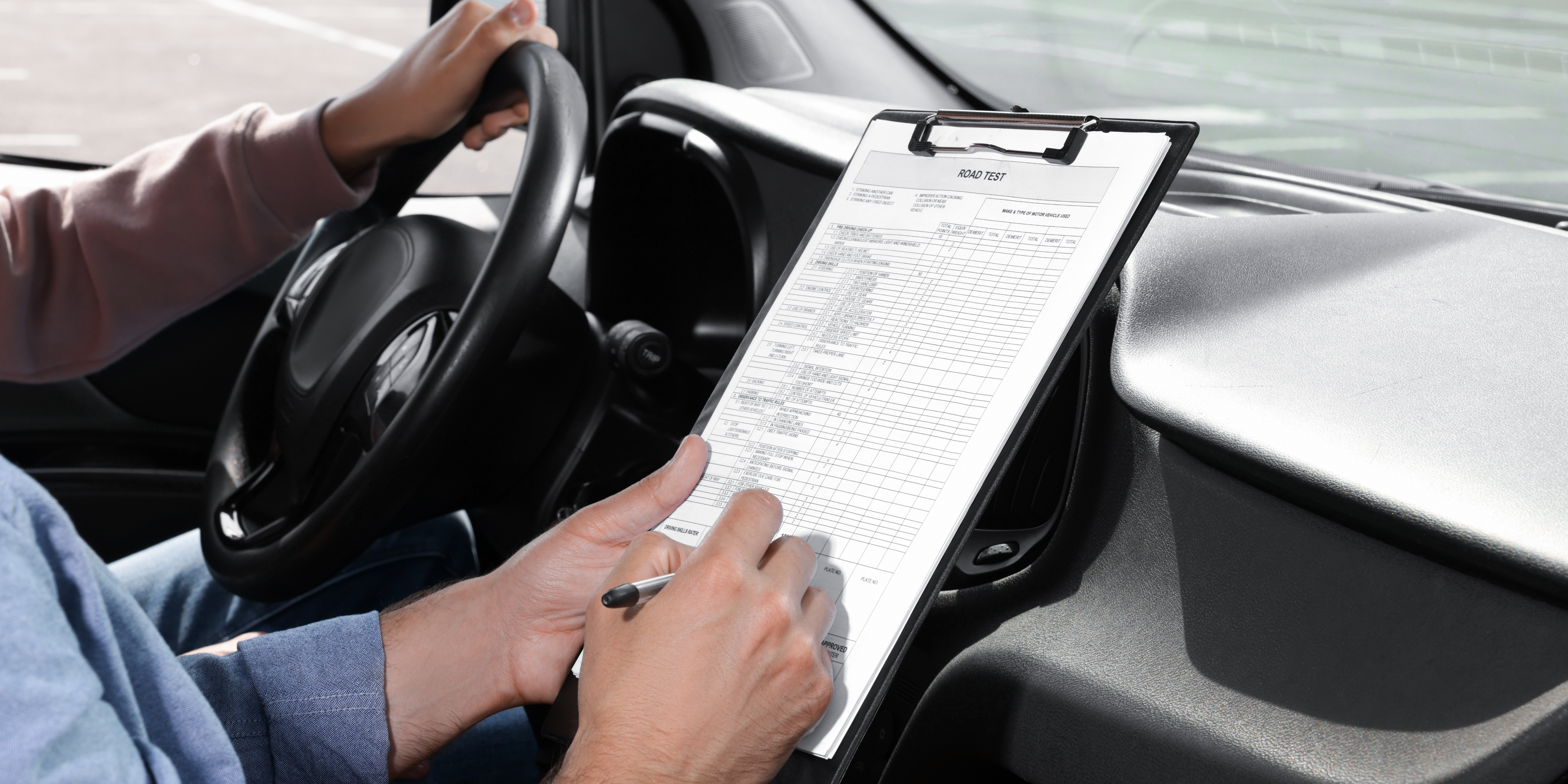After many years of getting picked up by your parents from all over the place and being protected them from all sorts of danger on the road, you now have to be ready to use the keys to the family car. New drivers must learn the rules of the road before actually going on the road. In today’s blog, we will cover some ways for a new driver to become a capable driver.
Learning to drive for the first time might seems both exciting and stressful. At Hi-Tech Driver Education, we recognize the feeling associated with learning to drive and we would like to make the transition safe and stress free as possible.
1. Minimum Requirements to get a driver’s licence in Ontario
In Ontario, the residents must be at least 16 years older and have a valid Ontario driver’s licence to drive in the province. You are required to pass a vision test to show that you can drive safely.
The process to apply for a driver’s licence depends on if you are a new driver or if have an existing licence. To apply for a driver’s licence, you will need to go to a Driver Examination Center and you will need to show the following:
- Proof of name
- Proof of your age/date of birth (an acceptable ID)
- Meet medical requirement
- A document with your signature
- Must pass a vision test, a knowledge test and a road test.
- Pay a fee to apply
To learn more about the guide to get a driver’s license in Ontario, read our blog about “New drivers guide for getting your Ontario Driver’s Licence.”
2. Driving Safety Tips for new drivers
1. Accelerate slowly
Driving for the first time may be difficult. It may compel some drivers to slam on the gas pedal when they see a red light turn green. It is always important to remain self-disciplined in order to avoid getting into a crash. In addition, your engine will perform much better when you gradually increase the pressure on the gas pedal without putting too much pressure.
2. Hold the steering wheel firmly
Keep both hands on the steering wheel with your left hand holding the wheel either 9 or 10 o’clock and right holding 3 o’clock. When taking turns, it is necessary to have steady hold of the wheel. Keeping your eyes on the road and properly holding the steering wheel is the key component of driving.

3. Brake gently
As mentioned for accelerating, it’s important to avoid slamming when coming to a stop. New learners should be aware of when to switch to the brake pedal. Furthermore, it is preferable to start by gently pressing on the brake at about 200 feet back. Braking is especially important when you see a yellow light.
4. Maintain a safe speed
It is true that most of us tend to drive slowly when we drive for the first time as we are trying to be comfortable. However, as we become pros at driving, we might push the boundary with the speed. Maintaining the minimum speed is simply adhering to the laws and manifesting a complete regard to safety.
5. Maintaining a reasonable distance
It may be true that driving for the first time can make it difficult to manage reaction time and be relatively slower than that of an experienced driver. A trick would be to follow the two second rule which is about maintain a safe trailing distance at any speed and ideally staying at least 2 seconds behind any vehicle.

6. Observe the road signs
Know all the road signs, safety signals and pavement markings. Make sure to never miss out on a road sign because they are posted for a reason. Following the road signs ensure safety and minimizes the risk of driving into a vehicle, pedestrian or cyclist. Remember that neglecting it can be dangerous.
7. Choose the right lane carefully
When you first start driving, make sure to learn the purpose of each lane before going out on the road. If you are about to turn or exit, know when to move into the far-right lane early enough to prevent from cutting off other drivers. Also, remember to check your mirrors and look over your shoulder when changing the lane.
Using the blinkers indicate where you plan to move in the future. It keeps other drivers prepared to slow down and make driving much easier. The use of horns is to warn others for unsafe situations, not to aggressively take out your anger. Also, be aware of other driver’s behaviours so you can be prepared to react to sudden situations.
3. Set ground rules and the consequences for teen drivers
Motor vehicle crashes continue to be the leading cause of death among young teenagers who are new to driving. Studies have discovered that young drivers are primarily victims of road crash due to inexperience and immaturity. This is why it is critical to remain aware of these consequences and set safety standards from the beginning.
Promoting safety for new drivers:
Practice and take advise: Parents are a great model of advocating and supporting their child. In fact, most children observe how their parents drive and are highly influenced by their behaviours. That is why driving with courtesy will model their own driving habits after yours.

Avoid nighttime driving: Driving at night is more dangerous than driving in the morning because most fatal accident occur at night. According to statistics, 42% of the traffic accidents happen at night. A way to prevent your child from driving at night, you should set car curfews at night with a set time limit of being out on the road, especially in the first few months of driving alone as a new licensee.
Never drink and drive: Drinking and driving is the most dangerous form of driving which reduces concentration and decreases vision. Take the time to learn about the consequences and if you are a parent reading this, please make it clear that if your child happens to drink, they can call you for a ride and that your main concern is their safety.
Avoid distraction: One of the major distractions while driving are your friends. If you plan to drive with your friends, always limit the number of friends and do not be influenced by what they say. If you feel uncomfortable, just drop them off on the side of the road or take a break in a safe space and let them know that they are creating distraction for you. Other distractions may include your cellphone. Learn to stay patient and avoid texting and driving. If you really need to answer a call or reply back to a text, pull into the parking lot, get everything tension free and make sure to remind the person that you are about to drive.
Car Maintenance: Learning about the functionality and features of the car is as important as driving. It is necessary to learn the basics to keep your driving safe and to prevent breakdowns. Here are some factors to take in consideration:
- Checking the fuel
- Checking fluids (oil, power steering, windshield washer, brake)
- Oil changes every 3,000 miles or based on the recommendation of the owner
- Proper tire pressure
- Keeping mirrors clean
As a parent and also as a new driver, you should negotiate the terms to reinforce the importance of rules and include the consequences for breaking them.
4. Practice safe driving and make it a habit
All drivers must remember the safety protocols to avoid car accidents. Here are some ways to prepare yourself behind the wheel:
1. Prepare your car before going on the road
As recommended by a driver instruction, always check your car internally and externally before going out on the road. That being said, look over your tires regularly to see if you have enough air pressure. If you are not sure, go to the nearest gas station and get it checked. Secondly, adjust your mirrors and seat to your preference. This is important to keep yourself calm and comfortable. Lastly, get yourself bucked in a movable position so that you can easily check your mirrors.
2. Minimize distractions
You will always need to give full attention to driving. Make sure to keep your phone away, keep the music low in volume, avoid eating and drinking and driving. This will increase your focus as to learning the basics of driving.
3. Adapt to driving in different environments
Driving on a sunny day is the easiest form of driving; however, you will sometimes encounter environmental conditions from rainfall to snowfall. Driving in these conditions may not be smooth and it may not feel easy to control the vehicle. Be sure to be with someone if you happen to drive for the first time in these types of conditions.

Now that we’ve come to a conclusion, we recommend you familiarize yourself with the rules of the road not only for your own safety, but everyone around you. This is why it is important to choose the right driving school to build strong foundation for driving skills. At Hi-Tech Driver Education, our first priority is teaching the best courses to be able to enhance their driving skills and get the best results out of it. Contact us or check out our website to learn more about the courses we are offering. We would love to hear from you!






